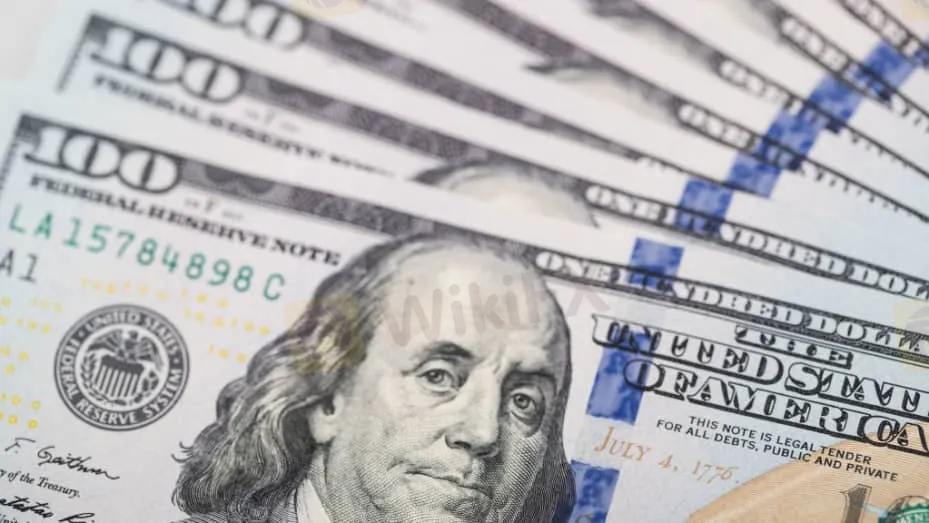简体中文
繁體中文
English
Pусский
日本語
ภาษาไทย
Tiếng Việt
Bahasa Indonesia
Español
हिन्दी
Filippiiniläinen
Français
Deutsch
Português
Türkçe
한국어
العربية
Dollar catches footing as inflation pressures rates outlook
Abstract:The dollar steadied on Monday after its steepest weekly loss in more than a month, as traders weigh the effect of inflation on the relative pace of looming rate hikes - with a wary eye on U.S. growth data and a European Central Bank meeting.

SINGAPORE (Reuters) - The dollar steadied on Monday after its steepest weekly loss in more than a month, as traders weigh the effect of inflation on the relative pace of looming rate hikes - with a wary eye on U.S. growth data and a European Central Bank meeting.
The greenback had softened, especially against the yen, after Federal Reserve Chair Jerome Powell said on Friday it was time to start cutting back asset purchases, though not yet time to begin raising interest rates.
His remarks came as investors have priced in Fed rate hikes starting in the second half of next year and yet have begun to trim long dollar positions in anticipation that other central banks could get moving even sooner.
On Monday, the dollar was firm at $1.1643 per euro and found a footing on the yen at 113.54 after Friday's slide. The Australian and New Zealand dollars were held below the multi-month peaks they had scaled during last week. [AUD/]
The Antipodeans, along with sterling, had bounded ahead this month as traders scrambled to price in higher rates while inflation runs hot, with markets now eyeing a near 60% chance of a Bank of England hike next week.
Sterling was up 0.1% at $1.3772, but analysts were cautious about further gains especially as the Fed edges closer to tapering and policy tightening. The Aussie was steady at $0.7473 and the kiwi at $0.7157.
“Dollar risks remain skewed to the upside,” said Kim Mundy, a currency analyst at the Commonwealth Bank of Australia (OTC:CMWAY) in Sydney.
“(Fed) members are slowly conceding that inflation risks are skewed to the upside (and) the upshot is that interest rate markets can continue to price a more aggressive Fed Funds rate hike cycle which can support the dollar.”
This week, Australian inflation data due on Wednesday is likely to set the tone for the next stage in a tussle between traders and a resolutely dovish central bank.
On Thursday, U.S. growth data is expected to show a slowdown in growth as consumer confidence has faltered, but a surprise on either side might have consequences for the interest rate outlook.
Also on Thursday the Bank of Japan and the European Central Bank meet. Neither are expected to adjust policy, but in Europe market gauges of projected inflation are at odds with the bank's guidance.
In the background, traders remain nervous about trouble brewing at indebted developer China Evergrande Group. It surprised investors by averting default with a last-minute coupon payment last week, but other pressing debts loom.
China's yuan held just shy of a five-month peak in offshore trade at 6.3804 per dollar. Cryptocurrencies were steady below the heights reached last week, with bitcoin up 2% at $62,000.
In emerging markets the beaten-down Turkish lira was braced for selling as state banks are expected to follow a surprise rate cut from the central bank.
Source: Investing.com

Disclaimer:
The views in this article only represent the author's personal views, and do not constitute investment advice on this platform. This platform does not guarantee the accuracy, completeness and timeliness of the information in the article, and will not be liable for any loss caused by the use of or reliance on the information in the article.
Read more

Weekly Fundamental Gold Price Forecast: Hawkish Central Banks a Hurdle
WEEKLY FUNDAMENTAL GOLD PRICE FORECAST: NEUTRAL

Gold Prices at Risk, Eyeing the Fed’s Key Inflation Gauge. Will XAU/USD Clear Support?
GOLD, XAU/USD, TREASURY YIELDS, CORE PCE, TECHNICAL ANALYSIS - TALKING POINTS:

British Pound (GBP) Price Outlook: EUR/GBP Downside Risk as ECB Meets
EUR/GBP PRICE, NEWS AND ANALYSIS:

Dollar Up, Yen Down as Investors Focus on Central Bank Policy Decisions
The dollar was up on Thursday morning in Asia, with the yen and euro on a downward trend ahead of central bank policy decisions in Japan and Europe.
WikiFX Broker
Latest News
CWG Markets Got FSCA, South Africa Authorisation
Amazon launches Temu and Shein rival with \crazy low\ prices
CySEC Warns Against Unauthorized Investment Firms in Cyprus
Revolut X Expands Crypto Exchange Across Europe, Targeting Pro Traders
Crypto Scammer Pleads Guilty in $73 Million “Pig Butchering” Fraud
Capital.com Shifts to Regional Leadership as CEO Kypros Zoumidou Steps Down
Broker Review: Is Exnova Legit?
Why Even the Highly Educated Fall Victim to Investment Scams?
Warning Against Globalmarketsbull & Cryptclubmarket
FBI Raids Polymarket CEO’s Home Amid 2024 Election Bet Probe
Currency Calculator


